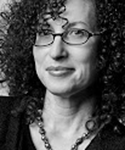Leaders at theological schools should base fundraising goals on how much money they can realistically raise, not the amount they actually need, according to a new report by the Center for the Study of Theological Education at Auburn Theological Seminary.
The report, called “Great Expectations: Fund-raising Prospects for Theological Schools,” analyzed the fundraising history of institutions reporting to The Association of Theological Schools as well as case studies of 10 seminaries.
Researchers found most seminaries collected in special campaigns less than 2.5 times their “normal” amount of giving. The report also found successful fundraising efforts require the participation of the institution’s president -- some advise half a president’s time should be devoted to development activities.
“You can’t solve the big financial problems of an organization by just stating a very high goal for increased gift receipts and then going out and getting it,” said Barbara G. Wheeler, director of the center, which crunched a decade’s data from theological schools, comparing giving for operations from 1998 to 2002 with that of 2003 to 2007.
“We’ve seen too many institutions addressing their funding problems by setting financial goals that are unrealistic,” she said. “They said, ‘A campaign will save us.’ They’re losing time, and while they are doing that, they’re getting in worse trouble.”
The report recommends a different approach: Effective fund-raising requires a strategically derived goal quarterbacked by a committed president who, along with a financially invested board, nurtures current and potential donor relationships.
“Before you stake your future on greatly increased giving from sources that are pretty hard to develop, you’d better look back at your experience and at other institutions like you and make sure those kinds of fundraising goals are achievable,” Wheeler said.
The report examined the unique challenges of seminary fundraising: They are smaller, with lower visibility and fewer alumni than their college and university counterparts. Their religious affiliation also makes them less attractive for direct corporate support, and their endowments have shrunk along with Wall Street’s fortunes. And while they do often have denominational support, that funding is waning, putting the focus on individual givers.
“Neither graduates nor congregations, however, directly generate most of the major gifts on which schools rely for their future,” according to the study.
Individual donors who have the means to make substantial gifts are not the people who receive theological education directly.
“Unlike colleges, unlike medical schools, law schools, and business schools, the average seminary graduate is not at the high end of anybody’s pay scale,” Wheeler said.
Although the report’s focus is theological schools, nonprofits of all kinds could learn from its findings.
“[They] should pay special attention to what we’ve found out about seminaries,” said Anthony T. Ruger, senior research fellow at the center, because “Great Expectations” is applicable to other nonprofits or organizations interested in and dependent on donors.
That includes faith-based nonprofits, which have mushroomed in recent years.
“More and more people see a niche for a need, and they start a nonprofit to address that,” said William G. Enright, [former] executive director of the Lake Institute on Faith & Giving at the Lilly Family School of Philanthropy at Indiana University. In 1900, there were 28 faith-based nonprofits. By 1950 there were 178. In 1970, there were 351, and in 2001 there were 575, said Enright, quoting data from a Princeton University sociologist.
“The explosion of nonprofits is so significant. There’s intense competition for the donor dollar,” he said. The good news is half of all U.S. residents give to religious organizations -- even more than that when religiously based hospitals and schools are included, according to the report.
Other nonprofits also can learn from seminaries how to expand their reach. In recent years, theological schools have established extension centers and computer learning, Ruger said.
“What they have done is also another recommendation for nonprofits: Find other ways to adapt your services and mission, new ways to expand, new markets, if you will,” he said. Many schools also are grappling with cost-cutting as they consider discontinuing programs, forging new partnerships and even trimming faculty and staff.
“But there’s also [the question]: What do we do that’s of interest to and of value to others? Is there a way to expand our programs to attract new constituents, new clients?” Ruger said.
Strong leadership is crucial. Among the “Great Expectations” case studies, “no fund-raising efforts succeeded without the focused, regular, and enthusiastic leadership of the institution’s chief executive,” according to the report.
But for some seminary presidents, many of whom have ascended to the post from careers in academia, the chief fundraiser hat is ill-fitting. While one-third of the report’s respondents admitting having “no confidence” in this area, the report said, “Veteran successful presidents affirm that half of a president’s time should go to cultivation of donors and other development activities.”
That “is a kind of ‘Aha!’ or ‘Gee, I didn’t know that!’ moment for many presidents,” Ruger said.
Effective leadership starts with donor relations. Everyone is not equal, Enright said. Seminary leaders must realize there’s a “giving pyramid” traditionally at work, he said, where the top 10 percent of donors contribute 60 percent of the funds raised. The next 20 percent of donors give 30 percent, and the last 70 percent of benefactors put in about 10 percent.
“Sometimes nonprofit leaders say, ‘We just want everybody to give,’ or ‘If we want to meet our budget, we’ll just focus on that bottom 70 percent, raising them up,’ and that’s a prescription for disaster,” he said.
Those top givers should be viewed as primary relationships that must be nurtured.
“Giving is very personal,” Enright said. “A first rule is saying thank you. And then you want to not only say thank you, you want to keep the donor informed as to how their gift is being used and maybe the difference their gift has made to that particular institution.”
The president need not be the person who makes the pitch for the funds. “The ‘ask’ can be enunciated by a trustee or a development staff member,” according to the report. Nonprofits need committed, focused staff to work on fundraising with the president, though in this economic climate the development department may often be an early candidate for the chopping block.
“It’s across the nonprofit world, and it’s a sad commentary…We say it’s like slitting your own throat. You need the funds and then you’re cutting the one area that’s responsible for generating the funds,” Enright said. The institution’s development officer, however, should be working alongside the president in “organizing, scripting, and rehearsing donor meetings in order to make the best use of time spent with the individual,” according to the report.
Getting donor development right isn’t a matter of presidential personality. It’s about discipline, the researchers noted. “The chief executives who applied themselves to the task of raising funds in a sustained and systematic way usually saw excellent results,” they reported. “Several made a list of persons who could either make large contributions or heavily influence the public reputation of the school. They then contacted those on the list regularly -- every quarter, for instance, or more often as appropriate.”
Finally, a board active in giving is a must. “Full board participation in giving is universally acknowledged to be a cornerstone of a successful fund-raising program,” but according to the report most theological schools fall short in this area with only 15 percent reporting all board members made a contribution in the year 2000, and only 32 percent having made provision for the schools in their wills.
“We say generosity always begins with your board,” Enright said. Religious nonprofits in particular struggle in this area because often their boards are populated by representatives of particular interest groups that have a stake in the proposed work of the organization, he said, which can hinder their money raising.
“You have to have people on the board who themselves are significant givers to [the] institution,” Enright said. “In a good nonprofit, people understand when they go on the board that they are expected to become major contributors to that nonprofit. That’s a sign of commitment to the mission of that particular organization.”
In addition to making personal gifts to the institutions, “Great Expectations” noted that trustees also serve as important bridges to others in the community. “Every trustee should be able to present a thoughtful case statement for support of their institution to family, friends, and colleagues.” Long-term donor cultivation is critical for a successful planned giving program, according to the report.
The report identifies some key principles for fundraising:
Set realistic goals. Assess giving history and prospects before setting goals, rather than basing the goals on what the school needs.
Timing is important. Campaigns are more successful if they are undertaken when a school is in good condition, a base of regular donors has been built and before the institution’s best donors have been asked too many times.
Focus fundraising efforts on current and prospective major donors. Less than one-fifth of fundraising proceeds come from smaller gifts. Fundraising staff and seminary presidents should focus on cultivating major donors.
Presidents are indispensable to fundraising success. Presidents successful at fundraising say about half a president’s time should be spent on development activities.
Successful programs require a team effort. Key players in the life of the institution, including development staff, the president and board members, should play a role in the fundraising effort.
Trustees are a necessary ingredient of a solid development program. Full board participation is universally acknowledged as a cornerstone of a successful campaign, but only 15 percent of theological schools report that all board members made a contribution in 2000.
The best programs are the result of long-term effort. Long-term cultivation is critical for a successful planned giving program.







